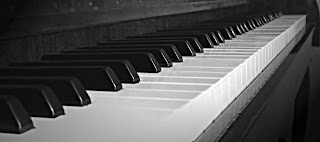The Prelude to the first act concentrates in just 34 bars (about 2 minutes of music) all the drama of the story of Rigoletto, in particular the obsessive idea of malediction that disrupts the tragic protagonist: in fact the musical idea of the bars will be 1-3 recovery in the troubled thoughts of Rigoletto.
It can be learned and performed as a piano piece. The effect piano will be very satisfactory, if you will bear in mind the sound and dynamics of the orchestral part.
You can perform the following exercises:
- rhythmic reading of the piece, accompanied by the gesture, with attention to the detachment of time and unity of the movement, articulation of sounds, the rhythmic phrasing; do not need to read the names of the notes, just scan some syllables comfortable for articulation;
- reading with the melodic voice, accompanied by the gesture, of the upper voice (and possibly elsewhere), preferably without help of the piano, with attention to the dynamics;
- study of the orchestral score;
- study piano;
- piano performance under the direction (edited by the teacher or a fellow student).
Very important rests: sometimes, pianistically, you are wrong, prolonging indefinitely the sounds with the pedal as necessary to respect the silence of expression intended by the author (eg bar 3, the third and fourth movement).
Treating the crescendo at bars 11-14: a gradual crescendo of four beats, characterized by persistent repetition of the 'G' and the figurative ascending the bass, which is intensified by the decrease in the last bar rhythm (each movement instead of every two).
Equally important, the gradual decreasing to 20-24 bars and then the crescendo at bars 29-33.

